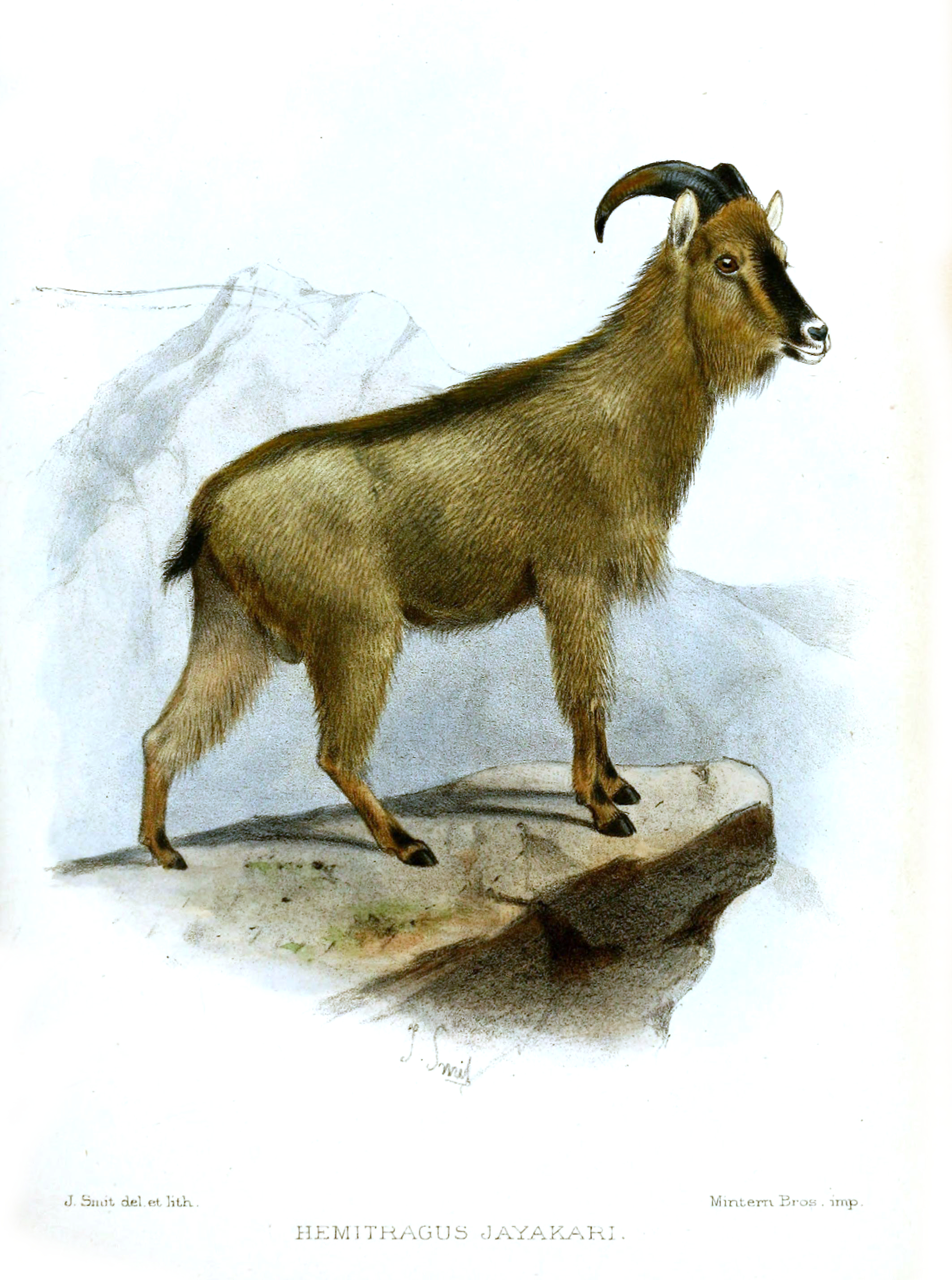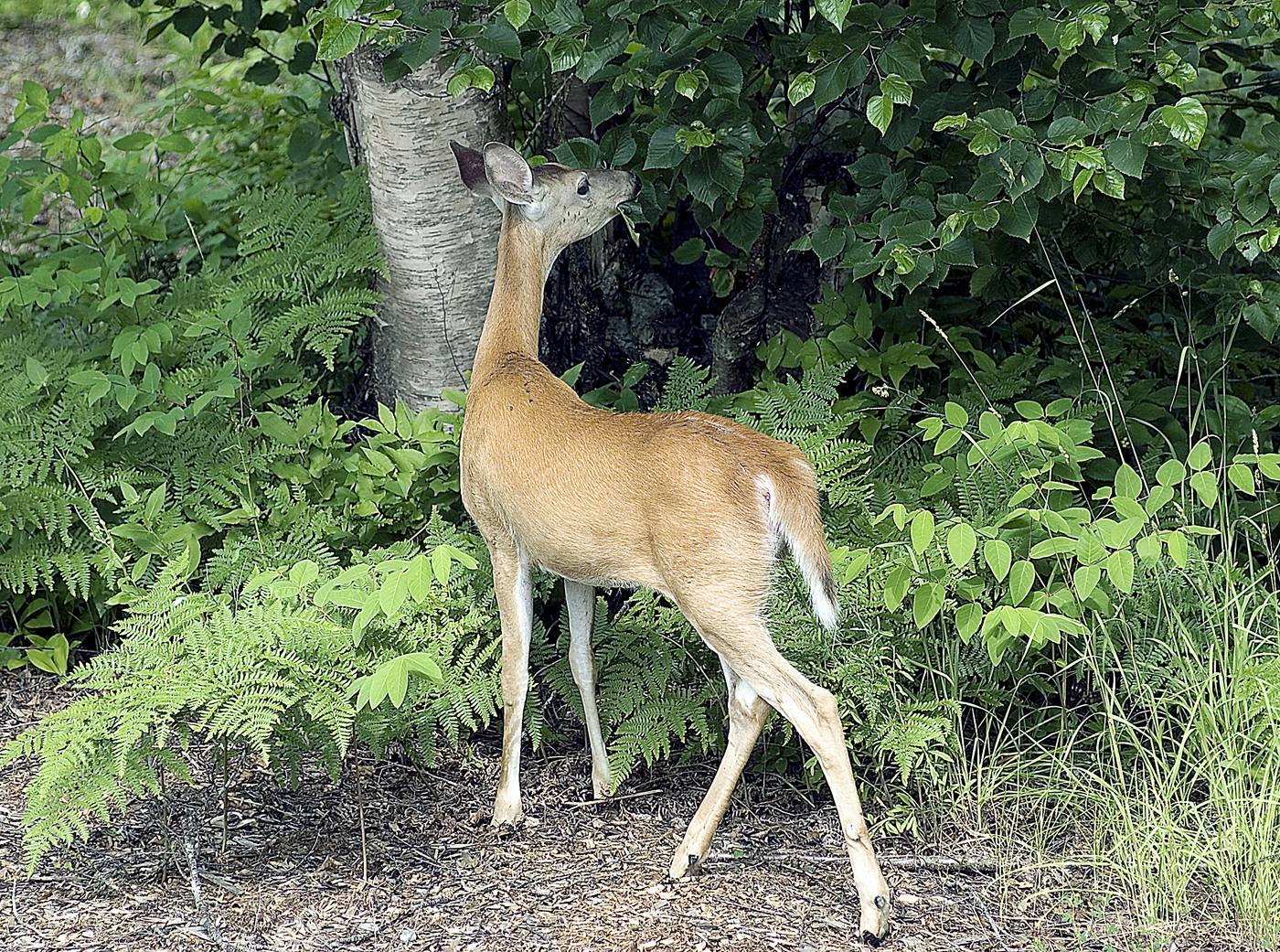|
Arabian Tahr
The Arabian tahr (''Arabitragus jayakari'') is a species of tahr native to eastern Arabia. Until recently, it was placed in the genus '' Hemitragus'', but genetic evidence supports its removal to a separate monotypic genus, ''Arabitragus''. Description It is the smallest species of tahr. It is of stocky build with backward-arching horns in both sexes. Males are much more robust than females. Their coats consist of a long, reddish-brown hair, with a dark stripe running down the back. Males possess the most impressive manes which extend right down the back and grow longer, based on the age. In the oldest males the muzzle darkens to black and the eye stripes also darken. As with most goat-antelopes, they have rubber-like hooves to provide balance and traction on the steep, rocky slopes. As of a 2018, the wild population is thought to comprise around 2,200 individuals. Habitat and range The Arabian tahr lives on steep rocky slopes of the Hajar Mountains in Oman and the United ... [...More Info...] [...Related Items...] OR: [Wikipedia] [Google] [Baidu] |
Al Ain Zoo
Al Ain Zoo (), also "Al Ain Wildlife Park & Resort" or simply "Al Ain Wildlife Park" (), is a zoo located in the foothills of Jebel Hafeet in Al Ain, Abu Dhabi, the United Arab Emirates. It is primarily composed of ungulates and herbivores, such as Arabian antelopes. It also holds oryx, eland, gazelle, and lechwe, as well as the rare white lion and Nubian giraffe. There are 68 species of mammals, 88 species of birds and 35 species of reptiles available in the 50 hectares of zoo houses. History and fauna In 1968 Sheikh Zayed bin Sultan Al Nahyan, the late Ruler of Abu Dhabi and President of the United Arab Emirates joined efforts and decided on founding a national zoo. This decision was born out of their genuine concern of the land's wildlife. In 1969 it was established by Shaikh Zayed Bin Sultan Al Nahyan and in 1972 it opened to the public. Among the species they wanted to protect were ungulates such as the Arabian oryx. Today, the zoo hosts over 4,000 an ... [...More Info...] [...Related Items...] OR: [Wikipedia] [Google] [Baidu] |
The Gulf Today
''Gulf Today'' is an English-language daily newspaper based in Sharjah, the United Arab Emirates. It is one of the four UAE broadsheet newspapers. The newspaper was launched on 15 April 1996 by brothers Taryam Omran Taryam and Abdullah Omran Taryam, owners of Dar Al Khaleej for Press, Printing and Publishing. The Dar Al Khaleej group also publishes '' Al Khaleej'', an Arabic Arabic (, , or , ) is a Central Semitic languages, Central Semitic language of the Afroasiatic languages, Afroasiatic language family spoken primarily in the Arab world. The International Organization for Standardization (ISO) assigns lang ... daily broadsheet newspaper. ''Gulf Today'' publishes an all-colour magazine, ''Panorama'', which is distributed free with the daily at the weekends. ''Panorama'' covers film, sports, literature, politics and entertainment from Hollywood to Bollywood. The editor in chief is Aysha Taryam. References {{DEFAULTSORT:Gulf Today 1996 establishments in the Uni ... [...More Info...] [...Related Items...] OR: [Wikipedia] [Google] [Baidu] |
Fruit
In botany, a fruit is the seed-bearing structure in flowering plants (angiosperms) that is formed from the ovary after flowering. Fruits are the means by which angiosperms disseminate their seeds. Edible fruits in particular have long propagated using the movements of humans and other animals in a symbiotic relationship that is the means for seed dispersal for the one group and nutrition for the other; humans, and many other animals, have become dependent on fruits as a source of food. Consequently, fruits account for a substantial fraction of the world's agricultural output, and some (such as the apple and the pomegranate) have acquired extensive cultural and symbolic meanings. In common language and culinary usage, ''fruit'' normally means the seed-associated fleshy structures (or produce) of plants that typically are sweet (or sour) and edible in the raw state, such as apples, bananas, grapes, lemons, oranges, and strawberries. In botanical usage, the term ''fruit'' als ... [...More Info...] [...Related Items...] OR: [Wikipedia] [Google] [Baidu] |
Leaf
A leaf (: leaves) is a principal appendage of the plant stem, stem of a vascular plant, usually borne laterally above ground and specialized for photosynthesis. Leaves are collectively called foliage, as in "autumn foliage", while the leaves, stem, flower, and fruit collectively form the Shoot (botany), shoot system. In most leaves, the primary Photosynthesis, photosynthetic Tissue (biology), tissue is the palisade mesophyll and is located on the upper side of the blade or lamina of the leaf, but in some species, including the mature foliage of ''Eucalyptus'', palisade mesophyll is present on both sides and the leaves are said to be isobilateral. The leaf is an integral part of the stem system, and most leaves are flattened and have distinct upper (Glossary of botanical terms#adaxial, adaxial) and lower (Glossary of botanical terms#abaxial, abaxial) surfaces that differ in color, Trichome, hairiness, the number of stomata (pores that intake and output gases), the amount and ... [...More Info...] [...Related Items...] OR: [Wikipedia] [Google] [Baidu] |
Shrub
A shrub or bush is a small to medium-sized perennial woody plant. Unlike herbaceous plants, shrubs have persistent woody stems above the ground. Shrubs can be either deciduous or evergreen. They are distinguished from trees by their multiple Plant stem, stems and shorter height, less than tall. Small shrubs, less than tall are sometimes termed as subshrubs. Many botany, botanical groups have species that are shrubs, and others that are trees and herbaceous plants instead. Some define a shrub as less than and a tree as over 6 m. Others use as the cutoff point for classification. Many trees do not reach this mature height because of hostile, less than ideal growing conditions, and resemble shrub-sized plants. Others in such species have the potential to grow taller in ideal conditions. For longevity, most shrubs are classified between Perennial plant, perennials and trees. Some only last about five years in good conditions. Others, usually larger and more woody, live beyond ... [...More Info...] [...Related Items...] OR: [Wikipedia] [Google] [Baidu] |
Grass
Poaceae ( ), also called Gramineae ( ), is a large and nearly ubiquitous family (biology), family of monocotyledonous flowering plants commonly known as grasses. It includes the cereal grasses, bamboos, the grasses of natural grassland and species cultivated in lawns and pasture. The latter are commonly referred to collectively as grass. With around 780 genera and around 12,000 species, the Poaceae is the fifth-largest :plant families, plant family, following the Asteraceae, Orchidaceae, Fabaceae and Rubiaceae. The Poaceae are the most economically important plant family, including staple foods from domesticated cereal crops such as maize, wheat, rice, oats, barley, and millet for people and as forage, feed for livestock, meat-producing animals. They provide, through direct human consumption, just over one-half (51%) of all dietary energy; rice provides 20%, wheat supplies 20%, maize (corn) 5.5%, and other grains 6%. Some members of the Poaceae are used as building materials ( ... [...More Info...] [...Related Items...] OR: [Wikipedia] [Google] [Baidu] |
Browsing (predation)
Browsing is a type of herbivory in which a herbivore (or, more narrowly defined, a folivore) feeds on leaves, soft shoots, or fruits of high-growing, generally woody plants such as shrubs. This is contrasted with grazing, usually associated with animals feeding on grass or other lower vegetations. Alternatively, grazers are animals eating mainly grass, and browsers are animals eating mainly non-grasses, which include both woody and herbaceous dicots. In either case, an example of this dichotomy are goats (which are primarily browsers) and sheep (which are primarily grazers). Browse The plant material eaten is known as ''browse'' and is in nature taken directly from the plant, though owners of livestock such as goats and deer may cut twigs or branches for feeding to their stock. In temperate regions, owners take browse before leaf fall, then dry and store it as a winter feed supplement. In time of drought, herdsmen may cut branches from beyond the reach of their stock, as fora ... [...More Info...] [...Related Items...] OR: [Wikipedia] [Google] [Baidu] |
Herd
A herd is a social group of certain animals of the same species, either wild or domestic. The form of collective animal behavior associated with this is called '' herding''. These animals are known as gregarious animals. The term ''herd'' is generally applied to mammals, and most particularly to the grazing ungulates that classically display this behaviour. Different terms are used for similar groupings in other species; in the case of birds, for example, the word is '' flocking'', but ''flock'' may also be used for mammals, particularly sheep or goats. Large groups of carnivores are usually called '' packs'', and in nature a herd is classically subject to predation from pack hunters. Special collective nouns may be used for particular taxa (for example a flock of geese, if not in flight, is sometimes called a ''gaggle'') but for theoretical discussions of behavioural ecology, the generic term ''herd'' can be used for all such kinds of assemblage. The word ''herd'', a ... [...More Info...] [...Related Items...] OR: [Wikipedia] [Google] [Baidu] |
Oxford University Press
Oxford University Press (OUP) is the publishing house of the University of Oxford. It is the largest university press in the world. Its first book was printed in Oxford in 1478, with the Press officially granted the legal right to print books by decree in 1586. It is the second-oldest university press after Cambridge University Press, which was founded in 1534. It is a department of the University of Oxford. It is governed by a group of 15 academics, the Delegates of the Press, appointed by the Vice Chancellor, vice-chancellor of the University of Oxford. The Delegates of the Press are led by the Secretary to the Delegates, who serves as OUP's chief executive and as its major representative on other university bodies. Oxford University Press has had a similar governance structure since the 17th century. The press is located on Walton Street, Oxford, Walton Street, Oxford, opposite Somerville College, Oxford, Somerville College, in the inner suburb of Jericho, Oxford, Jericho. ... [...More Info...] [...Related Items...] OR: [Wikipedia] [Google] [Baidu] |
Greek Language
Greek (, ; , ) is an Indo-European languages, Indo-European language, constituting an independent Hellenic languages, Hellenic branch within the Indo-European language family. It is native to Greece, Cyprus, Italy (in Calabria and Salento), southern Albania, and other regions of the Balkans, Caucasus, the Black Sea coast, Asia Minor, and the Eastern Mediterranean. It has the list of languages by first written accounts, longest documented history of any Indo-European language, spanning at least 3,400 years of written records. Its writing system is the Greek alphabet, which has been used for approximately 2,800 years; previously, Greek was recorded in writing systems such as Linear B and the Cypriot syllabary. The Greek language holds a very important place in the history of the Western world. Beginning with the epics of Homer, ancient Greek literature includes many works of lasting importance in the European canon. Greek is also the language in which many of the foundational texts ... [...More Info...] [...Related Items...] OR: [Wikipedia] [Google] [Baidu] |





